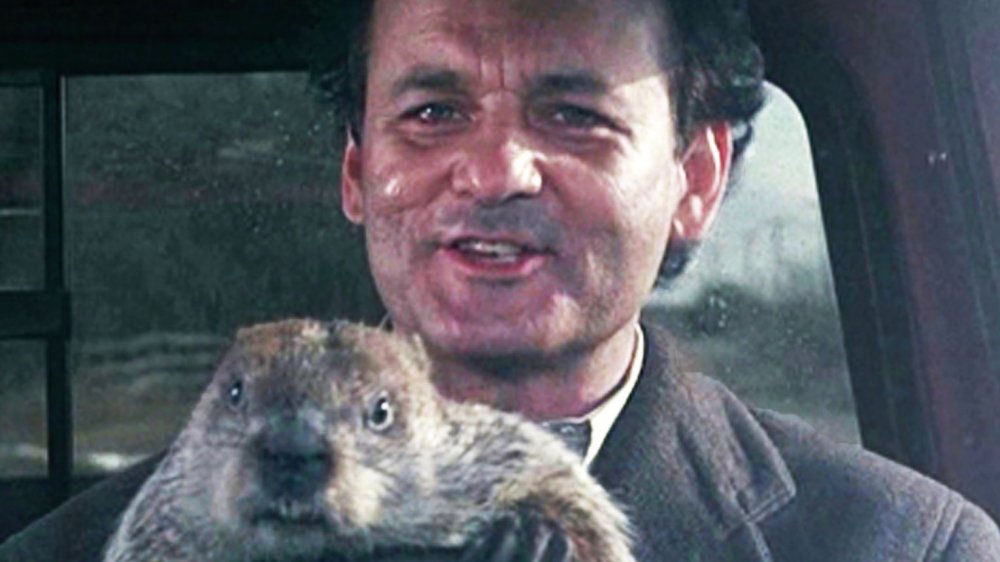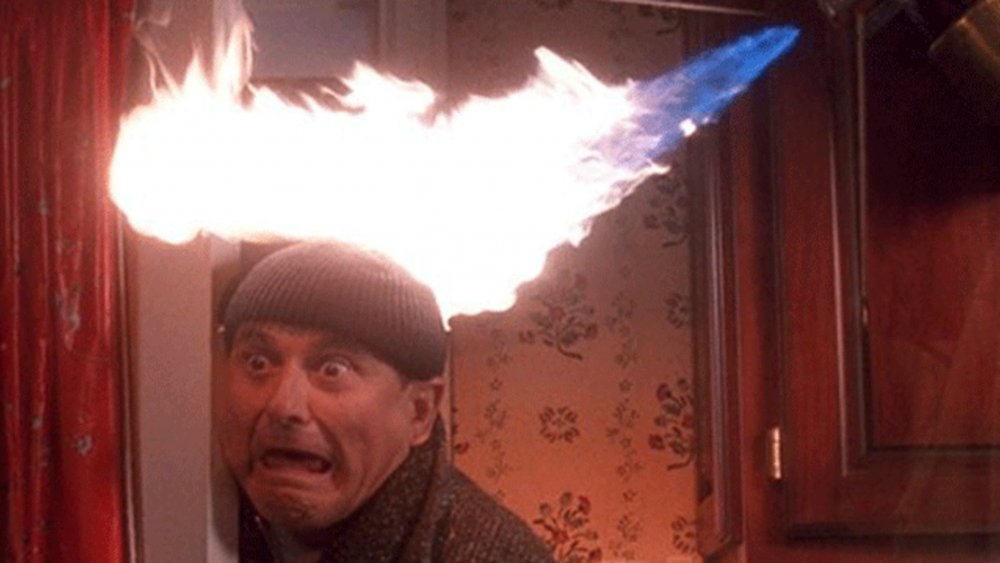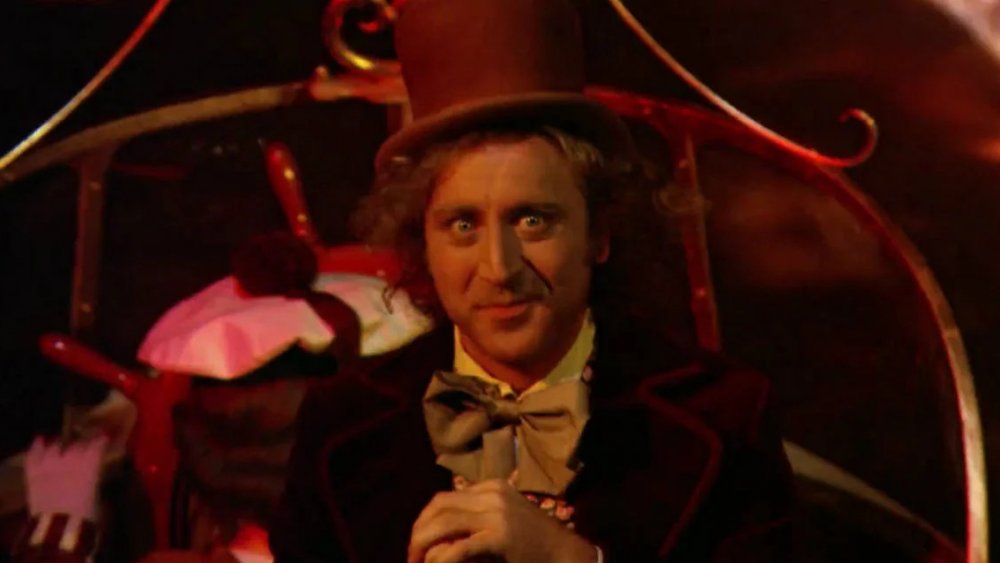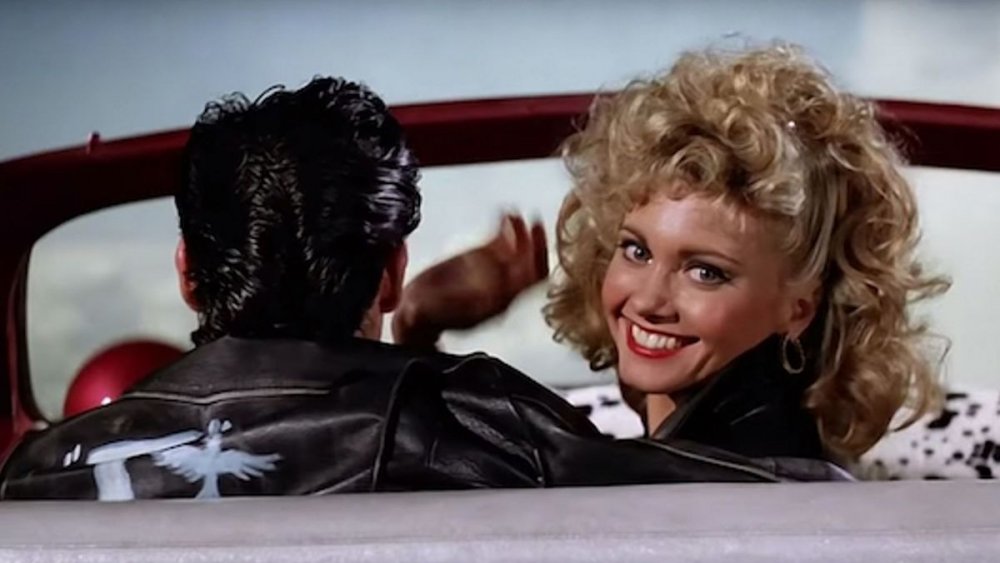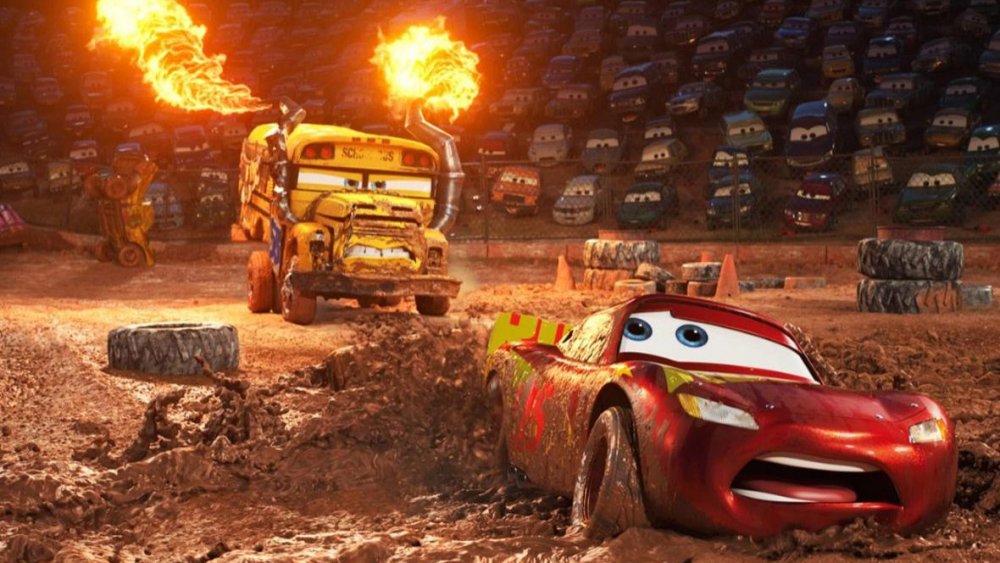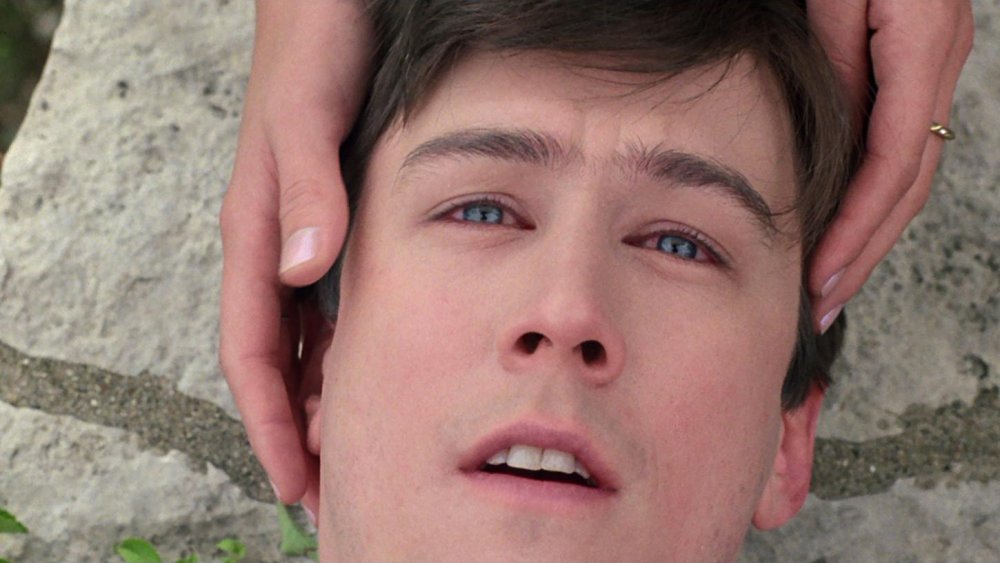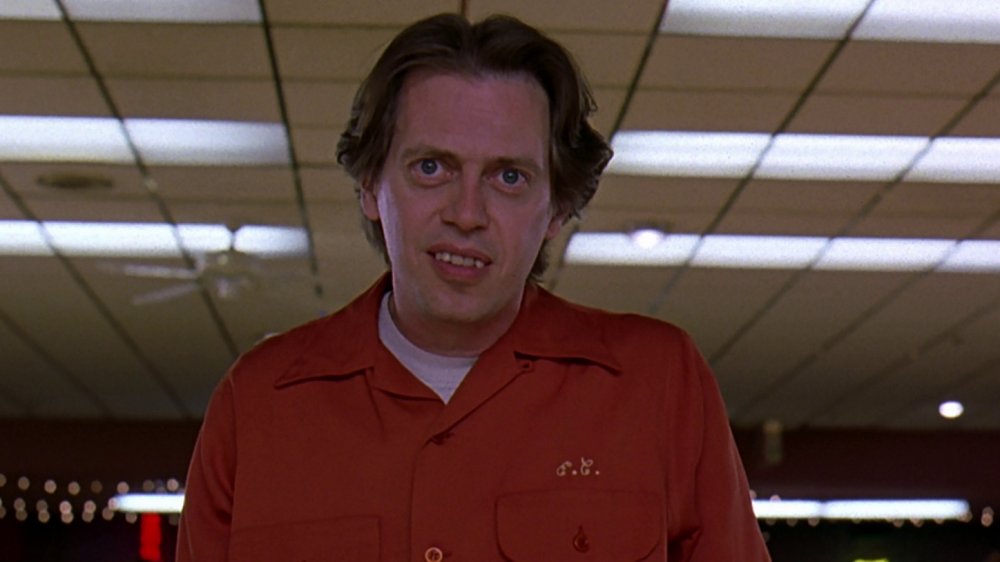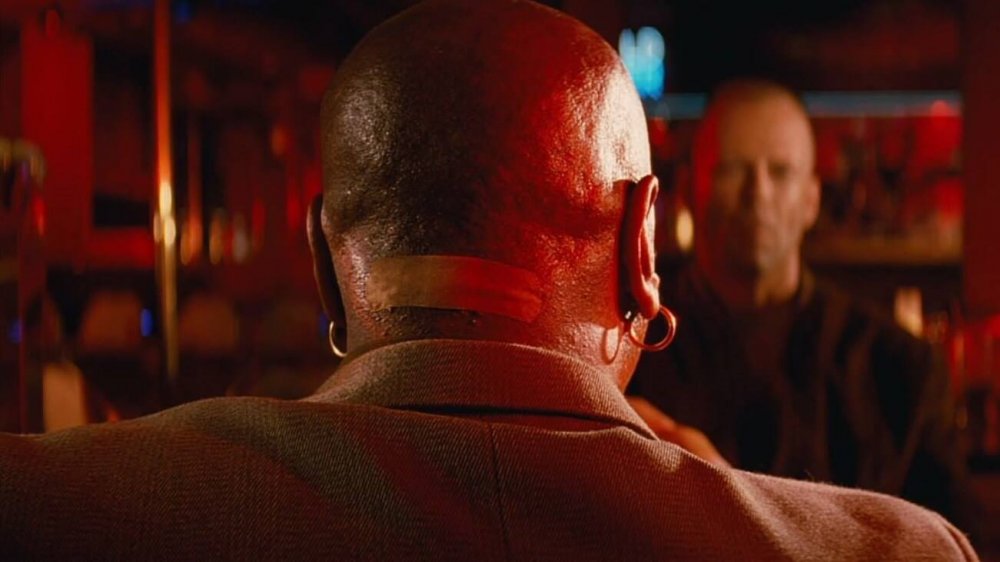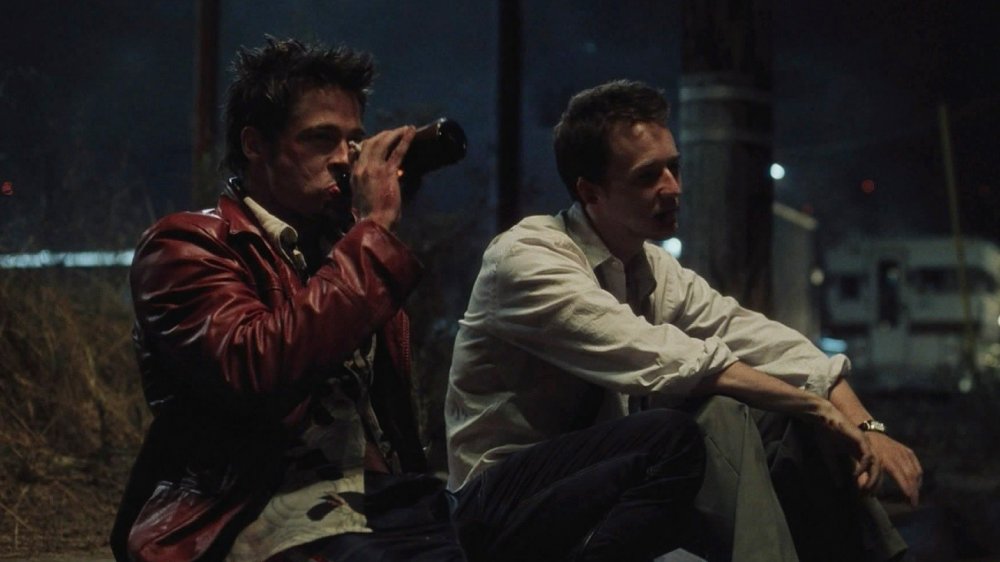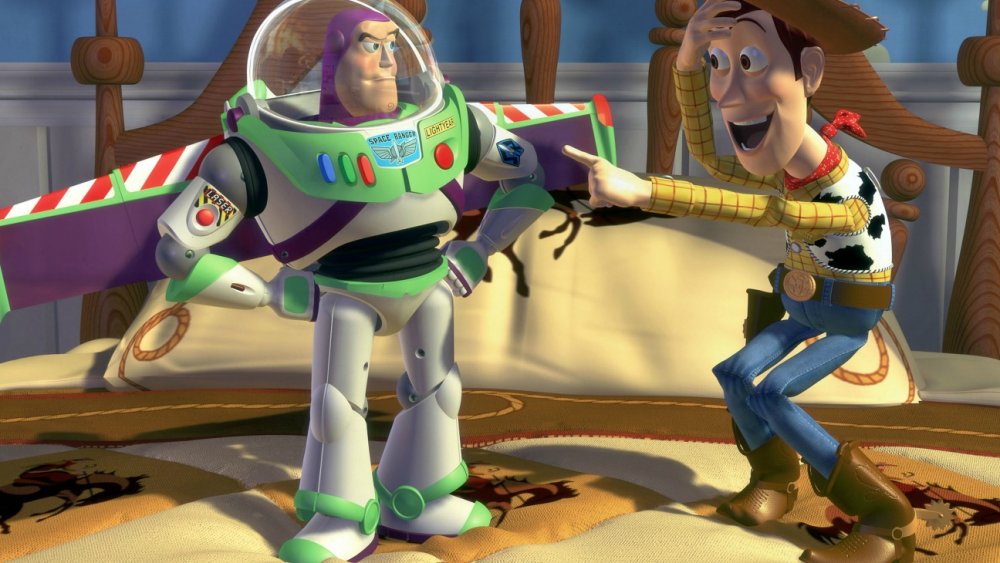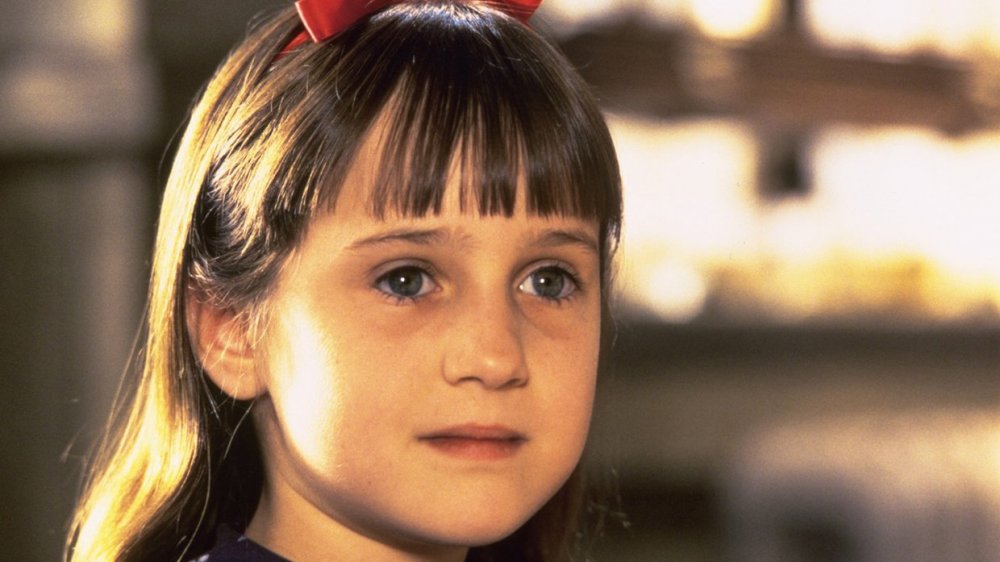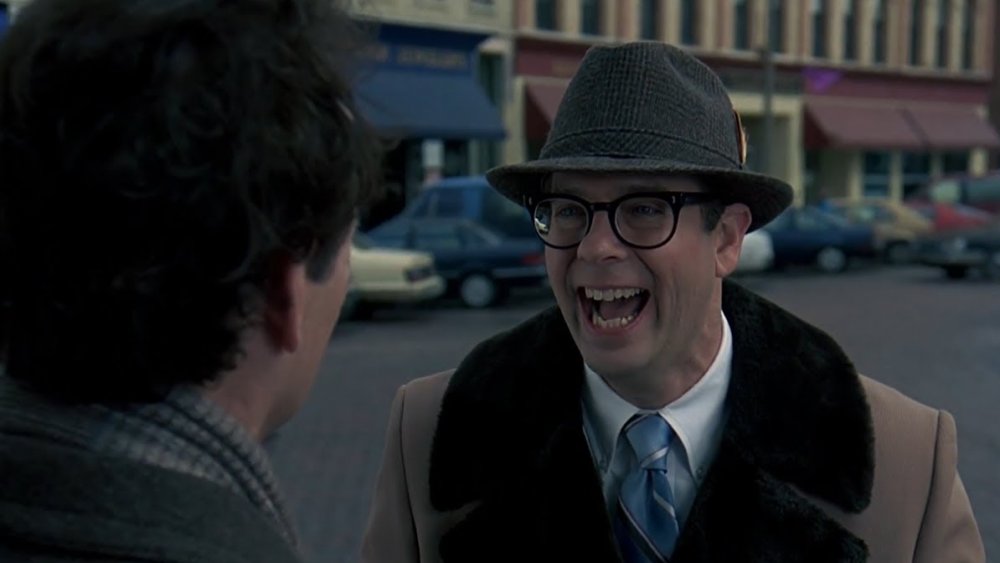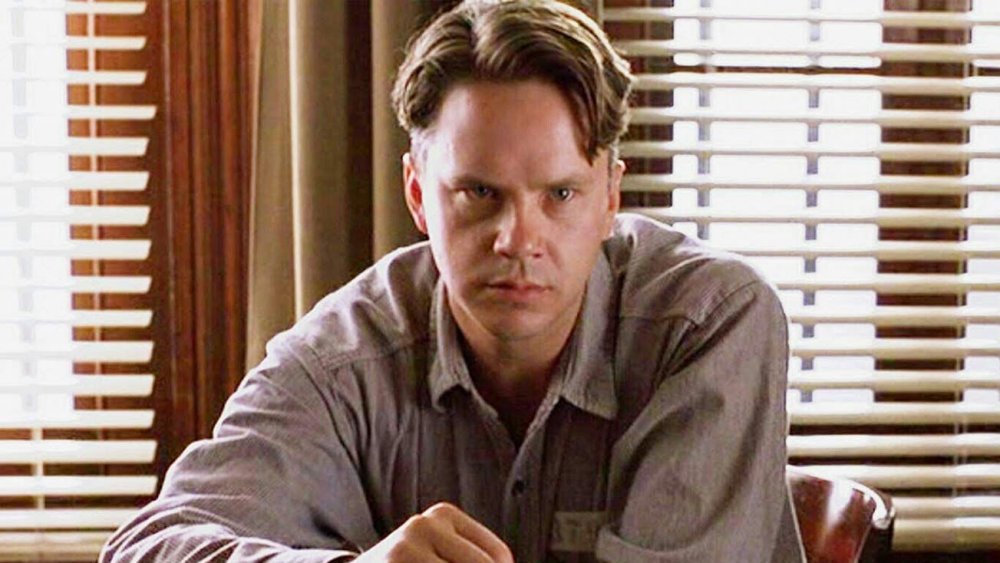Fan Theories That Turn Regular Movies Into Horror Movies
Just watching a movie and enjoying it is so yesterday. These days, film appreciation is a much more participatory event in which you're encouraged to devise your own solutions to plot holes, your own interpretation of events and endings, and even your own theories concerning what you just watched. Fan theories have become commonplace, in fact, and some of these theories are brilliant fun (imagining James Bond as a regenerating Time Lord like Doctor Who to explain all the different actors who've played him, for example).
But with great power comes great responsibility. The fan theory has the power to not only amuse and fascinate but to actually transform a film, to so completely reinterpret it as to move it into an entirely new genre. For example, the fan theories on this list do so much more than just offer a fun idea or extend your enjoyment of a great film. These theories actually transform their subject films from comedies, romances, or musicals into bone-chilling horror movies. The best (worst) part? They're so fiendishly clever and work so well that you won't ever be able to think of these movies the same way again.
Kevin McCallister grows up to be Jigsaw
Everyone loves Home Alone, a comedy that tells the story of a neglected child named Kevin McCallister (played by a young and preternaturally adorable Macaulay Culkin). Verbally abused and abandoned by his cruel family, Kevin turns to the torture and maiming of two desperate criminals for entertainment. Hilarious! But if that premise wasn't horrifying enough, journalist Jason Concepcion of Grantland has made a pretty solid case that Home Alone is actually the supervillain origin story of John Kramer — aka the Jigsaw Killer from the Saw movies.
Among the many pieces of evidence is Kevin's tendency to experience terrifying hallucinations, his fascination with his elderly neighbor (a rumored serial killer), his use of recorded media to fool his enemies, and of course, his ability to devise ingenious and often dangerous traps — traps that, like Jigsaw's slightly more horrifying versions, have to be activated by the victim themselves. There's so much more, including Macaulay Culkin's eventual resemblance to Jigsaw actor Tobin Bell, the viciousness of Kevin's home-defense traps (most of which would've caused serious injury and possibly death in real life), and the presence of a clown doll in the McCallister's basement, an image possibly embedded on Kevin's tortured psyche and eventually inspiring Jigsaw's iconic puppet, Billy. Next time you watch this comedy classic, remember that you're watching the first tentative steps into darkness by a terrifying murderer.
The terrifying fan theory about Willy Wonka and the Chocolate Factory
The original film adaptation of Charlie and the Chocolate Factory is a beloved classic (the 2005 Johnny Depp remake, not so much). This is largely due to the deranged but brilliant performance of Gene Wilder, who was at the height of his off-center comedic powers in 1971 ... but it's also due to the dark tone of the film. Seriously, this G-rated movie is full of disturbing moments. The story makes little effort to redeem the transparently awful children who tour Wonka's magical candy factory, making you cheer when the kids are variously sucked into chocolate sauce plumbing, turned into blueberries, or shrunk to microscopic size. Of course, in reality, those events would be horrifying (and in reality, a guy like Willy Wonka wouldn't be allowed within 50 feet of children), but while the movie is freaky enough, we can make it even freakier with a bit of pure imagination.
So you want to turn this dark comedy into a horror film? What if these kids were dead, and they were being taken through the circles of Dante's Hell and deposited in their proper place? Well, according to Uproxx (via Buzzfeed), there's a fan theory that does just that, explaining the parallels between Willy Wonka and the Chocolate Factory and the classic poem The Inferno by Dante, in which Hell is divided into nine 'circles' where different kinds of damned souls reside. Short version? The factory is Hell, and Wonka is Charon, the ferryman taking a batch of newly dead kids on a tour and depositing them in the correct circle based on their fundamental sin.
This Grease fan theory is a real drowner ... uh, downer
Grease is a weird movie. Even in 1978, when the setting was just 20 years in the past, its vision of high school in the 1950s mixed lighthearted humor with some really dark stuff (lines like "did she put up a fight?" in the song "Summer Nights" have not aged well). And in the modern day, it seems to depict a wholly alien world. On top of all that, it ends with the two main characters, Sandy and Danny, getting into a hot sports car and ... flying off into the air while their friends wave ecstatically from the ground.
But that weird ending inspired one of the greatest and most enduring fan theories of all time, the theory that the whole story is an "Owl Creek Bridge"-like death fantasy as Sandy lies dying on a beach somewhere. Pivoting off a line from "Summer Nights" that Danny sings — "I saved her life / she nearly drowned" — the theory (as detailed by The Washington Post) suggests that Sandy did indeed drown, and that Danny is a boy trying to resuscitate her while her dying brain hallucinates this wild high school fantasy where they wind up as a cute couple. The theory originated on Reddit in 2013, and it's spawned some other versions. One accepts most of the film as real, but theorizes Sandy commits suicide after her "Sandra Dee" number, and the last scene where everyone's problems magically disappear and everyone is happy is the hallucination.
The Cars franchise is set after an A.I. uprising
If you've ever been near a child in the last few years, you're at least tangentially familiar with the animated film Cars, set in a world of talking automobiles. It's a breezy, child-friendly fantasy that has launched a goldmine in tie-in merchandise, not to mention several sequels. But several people, including writer Jason Torchinsky of Jalopnik, have noticed some details that turn this PG-rated romp into a terrifying post-apocalyptic story certain to scar you for life.
So what's the proof that the Cars franchise is set in post-human wasteland? Well, the cars all retain vestigial evidence of a vanished human race. For example, rear-view mirrors and door handles wouldn't be necessary if there'd never been any humans. Another creepy detail is the fact that all the cars speak human languages and have cultures based on human cultures. The theory speculates that the cars are actually descended from today's increasingly sophisticated, self-driving cars. At some point, they attained sentience, and the humans either died off ... or were purged. By the cars, if we're not being clear. Torchinsky then takes this theory one step further into horror territory by suggesting that maybe there are humans in the Cars universe — embedded inside the vehicles and providing their personalities and voices.
Ferris Bueller's Day Off is a horror movie about an imaginary best friend
Everyone wants to be Ferris Bueller — the unflappable, clever teenage hero of Ferris Bueller's Day Off. It's easy to see why. Ferris effortlessly trolls authority figures, is widely admired by everyone at school (when rumors of his illness spread, the whole school rallies behind him), and he's such a great friend that he organizes a spectacular day for his buddy Cameron in order to snap him out of his depression. What's so scary about all that? Well, believe it or not, there is indeed a horror movie lurking underneath this '80s comedy classic.
As explained by The Wire (via The Atlantic), Cameron is a depressed kid dealing with a terrible home life and a father who's implied to be cruel and cold. As a result, Cameron wants to act out but can't. So like the unnamed Narrator in Fight Club, he imagines a cool best friend who does all the fun stuff that Cameron can't bring himself to do. Said hallucination comes complete with a pretty, supportive girlfriend, a snazzy wardrobe, and the magical ability to get away with everything. In fact, the theory gets even more grim if you realize that Cameron probably never leaves his room until he ventures into the garage to destroy his father's prized car. Suddenly, this isn't a lighthearted comedy about facing your fears and growing up. It's the story of a psychologically damaged kid who snaps, has a lengthy breakdown, and more than likely drives his father's prize car off a cliff, killing himself.
Donny doesn't exist in The Big Lebowski
The Big Lebowski is brilliant, and the Dude as portrayed by Jeff Bridges has become one of the most enduringly popular characters of modern times (he's actually the smartest guy in the movie, if you think about it). But the character that inspired the fan theory that turns it into a full-on horror movie is Donny, Walter's meek bowling buddy played by Steve Buscemi. As explained by The Nerdist, the theory proposes that Donny — constantly abused and screamed at by Walter (John Goodman) — is actually a figment of Walter's guilt- and grief-ridden imagination. In fact, it's possible that Donny was Walter's war buddy from back in Vietnam ... a war buddy who never came home.
Need more proof? The ashes that Walter and the Dude try (and hilariously fail) to scatter at the end of the film are Donny's remains that Walter brought back from 'Nam. He's been processing his PTSD ever since, carrying the ashes around and screaming at a ghost only he can see, and his friends all pretend not to notice, or they're truly unaware that Walter's outbursts aren't simply directed at them. Suddenly, this is the story of a man broken by his experience during the war, struggling to piece his sanity back together while being literally haunted. And Donny's dopey, smiling visage becomes something intensely sinister when viewed through the lens of Walter's disintegrating mental state.
That briefcase turns Pulp Fiction into a genuine horror film
Perhaps one of the oldest and most widely circulated fan theories involves Quention Tarantino's second film, Pulp Fiction. While the film depicts a highly stylized world of gangsters, oddballs, and petty criminals, it's all rooted in a fairly realistic presentation — except for one small detail: the briefcase. Sure, it's a MacGuffin that Jules and Vincent retrieve from Brett's apartment on behalf of their boss, Marsellus Wallace. But what's inside the briefcase that glows with a heavenly light and also justifies murdering several people in cold blood?
One theory suggests that the briefcase contains Marsellus' immortal soul — yes, his actual soul, as in the thing you sell to the Devil. Evidence for this includes the Band-Aid on the back of Marsellus' head (that's where his soul was supposedly removed from), the fact that the combination to the briefcase is 666 (SATAN!), and of course, that weird glow. The fact that this theory ties into the film's themes of fate, morality, and choice lends some weight to it, as does the series of inexplicable events that occur in proximity to the briefcase, like the way every bullet misses Jules in Brett's apartment.
This fan theory takes Fight Club to some super disturbing places
Fight Club is a pretty dark movie to begin with, although it has a happy-ish ending if you squint. To turn it a few shades darker and spin it directly into horror territory, just add some Calvin and Hobbes, the classic comic by Bill Watterson about a hyperactive kid and his stuffed toy tiger and the imaginary adventures they have. All you have to do, as Slash Film explains, is imagine that Calvin grew up to become a socially isolated, emotionally destroyed man — the unnamed Narrator of Fight Club. His toy tiger, Hobbes, is long gone, but Calvin still retains his lively, overactive imagination. When he shifts into full-on crisis mode, he falls back on his old habit of inventing a bad influence/best friend — this time a washboard-abbed Brad Pitt type named Tyler Durden.
Only instead of imagining himself as Spaceman Spiff, establishing the seminal men's organization GROSS (Get Rid of Slimy Girls), and making grotesque snowmen, Calvin now punches his imaginary friend in the face, and the two discuss the philosophy of masculinity and plot the downfall of civilization. What really makes this a horror story is how it traces the slow decline of Calvin from a bright, happy child into an unstable, violent terrorist, making you wonder what exactly happened to the guy — and if the reason he spent his childhood pretending his stuffed tiger was alive was because he was burying some horrifying trauma.
According to this fan theory, the Toy Story franchise is pure nightmare fuel
The Toy Story films somehow combine the very twee idea of toys coming to life whenever you're not looking with the sort of emotional gut-punches usually reserved for films about people dying of terminal diseases (don't even try to deny that you've cried during all four films, no one's buying). But what happens if you start (over)thinking the metaphysics of how, exactly, those toys animate? Well, according to Digital Spy, there's one fan theory that turns this animated flick into a horror movie that threatens to destroy everyone's inner child. As the theory goes, what if the toys are actually immortal vampires that live off of children's joy?
Aside from the fact that "immortal joy vampires" is a cool band name, this idea transforms the films into terrifying stories of tiny plastic vampires literally draining happiness from your children — and then doing it again to other kids, because they're immortal. And if that isn't horrifying enough for you, there's another fan theory that's even worse. If the toys aren't immortal, then they're mortal. If they're mortal, they can die. But since you never see the toys being sentient and alive, you wouldn't know it if they died ... and so your kids might literally be playing with a toy corpse right now. RIGHT. NOW.
Matilda is secretly a prequel to a horror movie classic
Roald Dahl brought a deep vein of darkness to many of his children's stories, and Matilda is no exception. And the same goes for the 1996 movie. In the film, Matilda's parents treat her horribly, and headmistress Miss Trunchbull tortures the students and then gaslights them with insane punishments their parents don't believe are real. The only source of comfort for Matilda is her teacher, Miss Honey, who's also a victim of Trunchbull's malice. Matilda is able to get her revenge when she develops the power of telekinesis, which she uses to torture and gaslight Miss Trunchbull, driving her away.
So yeah, it's disturbing, but where's the horror movie? Well, according to Screen Geek, there's a fan theory that turns this into a horror prequel. What if Matilda and her adoptive mother, Miss Honey, move to New England, where Miss Honey's years of poverty and suffering curdle into a religious mania? And in order to escape their pasts, they change their name to White, and Matilda retreats into books and her own imagination as her home life descends into something darker than before. And just as Matilda's powers emerged just when she needed them in childhood, they emerge again when she reaches a breaking point in high school — except this time there's a much higher body count. Yeah, we're thinking Matilda is a set-up for Carrie, which definitely makes the kids' film even more disturbing.
Does the Devil show up in Groundhog Day?
The film Groundhog Day is so genius that it's become a genre all it own — any film involving an endlessly repeated experience someone has to break out of is instantly compared to the original. But the film has got a dark side to it. Phil Connors, as portrayed by Bill Murray, isn't a nice guy at first. Darker still, at his lowest point while trapped in the titular loop, he attempts suicide multiple times. But the ending is bright and cheery as Phil learns to be a better person and finds love and freedom.
But That Film Theory (via The A.V. Club) offers a bizarre idea that makes this timey-wimey classic a stone cold chiller. Ned Ryerson, the annoying insurance salesman who recognizes Phil, is actually the Devil ... and he wants Phil's immortal soul. Phil's life seems just fine up until he turns down Ned's initial request to buy an insurance policy. From that point on, Phil is tortured by the unending time loop, and Ned keeps popping up, his aggressive approach more and more sinister each time. Finally, after being completely broken by his torturous existence, Phil buys every insurance policy Ned has to offer, and he's instantly rewarded with his heart's desire. Did he just sell his soul to escape a Devil-made purgatory, making his happy ending a trick?
The Shawshank Redemption is a horror movie about a murderous mastermind
The Shawshank Redemption is a great movie about a wrongfully accused man who maintains his dignity and compassion despite years of abuse and confinement at the hands of a corrupt warden ... or it's the dark story of a master manipulator who murders several people, brainwashes his fellow inmates, destroys several lives, and vanishes into the wind like Keyser Soze. Does Red survive his reunion with Andy Dufresne, or is he murdered the moment the screen cuts to black?
According to Inverse, there's one fan theory out there that definitely assumes the latter. The theory rests on the fact that everything we know about Andy's actions, motives, and thoughts is told to us by Red, the narrator. So if Andy lies to Red and fools him, how would we know? If you watch the film with the idea that Andy is a coldly calculating sociopath, everything comes together. This is a man who spends decades plotting an escape that brilliantly takes down everyone who's treated him badly, a man who effortlessly creates a false identity — while stuck in prison — and successfully tricks the warden into trusting him. He's a killer. All we're lacking is the scene where Verbal Kint loses his limp.
